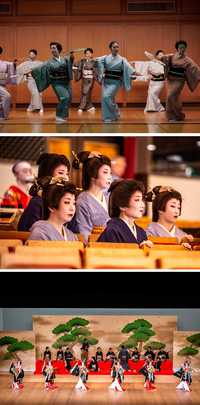Douglas Massey, Princess of Asturias Award for Social Sciences

Douglas Massey, Princess of Asturias Award for Social Sciences
The American demographer is an expert in migration phenomena.
Armando G. Tejeda
Correspondent
La Jornada Newspaper, Thursday, May 22, 2025, p. 4
Madrid. Sociologist and demographer Douglas Massey, an expert on migration phenomena, was awarded the Princess of Asturias Award for Social Sciences in recognition of his intellectual work, which has facilitated the understanding of international migration
. Born in the United States in 1952, Massey has published numerous essays and books, in addition to creating vital projects such as the Mexican Migration Project and the Latin American Migration Project, in collaboration with Jorge Durand, which have provided valuable data on migration patterns in Latin America.
The jury for the award was made up of academics, intellectuals and writers such as Javier Echeverría, Marta Elvira Rojo, Juan Pablo Fusi Aizpurúa, Pablo Hernández de Cos, Silvia Iranzo Gutiérrez and Ricardo Martí Fluxá, among others. The choice of Massey was justified in a statement in which it was noted that , based on the conception of man as a migratory species and through an outstanding research career, Douglas Massey has made fundamental contributions to the understanding of international migration and its consequences on urban segregation and social stratification, processes accentuated by globalizing dynamics
.
They also explained that "with a broad impact on the social sciences as a whole, Massey has constructed a theoretical model of the most demanding academic rigor, allowing us to interpret contemporary societies—in which migration has become a structural factor—with a calm, rational, and empathetic perspective."
Massey was nominated for the award by Alejandro Portes, 2019 Princess of Asturias Laureate for Social Sciences, and was chosen from a field of 40 candidates from 15 different nationalities. The American sociologist earned his bachelor's degree in sociology, psychology, and Spanish from Western Washington University in 1974. He subsequently completed his master's degree in 1977 and his doctorate in sociology in 1978 from Princeton University.

▲ The sociologist has also created projects such as the Mexican Migration Project and the Latin American Migration Project. Photo courtesy of the Princess of Asturias Award.
He began his teaching career at the latter institution, where he is currently the Henry G. Bryant Professor of Sociology and Public Affairs. He has also served as Director of the Office of Population Research and the Population Studies Program at the same university.
Academic rigor with an accessible approach
Recognized for his multidisciplinary approach, Massey has made significant contributions in areas such as international migration, residential segregation, and social stratification. His work has been fundamental, according to experts, to understanding the dynamics of international migration and urban segregation, combining academic rigor with an accessible approach that has influenced both academia and public policymaking.
Throughout his career, he has held prominent positions in various academic organizations and has received numerous honorary doctorates, including honorary doctorates from the University of Pennsylvania and the Ohio State University. He is a member of the United States National Academy of Sciences, the American Academy of Arts and Sciences, the American Philosophical Society, and the European Academy, among other institutions.
He has received numerous awards, including the World Cultural Council of Mexico's Recognition of Outstanding Merit Award in 2008 and the Bronislaw Malinowski Prize from the Society for Applied Anthropology, awarded with Jorge Durand for their collaborative work on the Mexican Migration Project, among others.
This was the third of eight Princess of Asturias Awards presented this year, the 45th edition. Previously, the Princess of Asturias Award for Communication and Humanities was awarded to the German philosopher and essayist of South Korean origin Byung-Chul Han, and the Princess of Asturias Award for Literature was awarded to the Spanish writer Eduardo Mendoza. The awards will be presented, as is the case every year, at an official gala at the Campoamor Theater in Oviedo.
AFP
La Jornada Newspaper, Thursday, May 22, 2025, p. 4
Jaimanitas. In 1994, Cuban artist José Fuster decorated the entrance to his house in the town of Jaimanitas with mosaics; 30 years later, the contagion
took effect: the community has been transformed into a gigantic and exuberant work of art.
Located in western Havana, this modest fishing village might have remained anonymous, like so many others, if this artist had not lived there.
Every week, a thousand tourists visit the site to admire facades, buildings, sculptures, and portals covered in ceramics or mosaics, in an explosion of colors and surreal shapes.
When he moved to Jaimanitas, Fuster, born in 1946 in Caibarién (central Mexico), was already a recognized artist, with an extensive career as a painter, engraver, and ceramist. But the sizes of the canvases and ceramics seemed small to me
, the artist explains to AFP.
He began by decorating the entrance to his house, then the patio, and ended by transforming his home into a true work of art, which now serves as a museum of his own work: murals, giant sculptures, mosaics, painted ceramics, and engraved poems.
Among them, the Cuban Table
pays tribute to figures and emblems from the country's history, while the Rooster Tower
is a 4-meter-high structure covered in colorful tiles.
People think of Gaudí for the technique (of mosaic), but the concept is Brâncusi
, explains the 79-year-old artist, referring to the Catalan architect Antoni Gaudí and the Romanian sculptor Constantin Brâncusi.
A trip in 1976 to Târgu Jiu in western Romania, where Brâncusi created a monumental complex, served as inspiration.
I saw what (Brâncusi) did in the village. It took me almost 20 years to develop the idea
, says Fuster, who, far from Romanian sobriety, has unleashed a profusion of colors of total baroque style.
Fuster's naive art draws on Cuban reality. Recurring palm trees, roosters, and peasant figures, accompanied by popular sayings, improvised phrases, and poetic flourishes, comprise his visual universe, from whose center emerge pink elephants and strong allusions to the 1959 Cuban Revolution.
Throughout, the works are embellished with countless details. Two eccentric bus stops mark the entrance to the town; meanwhile, the artist's new house, located on the seafront, is a work in constant evolution.
I had no idea I could create so much. It became a kind of contagion. People came to ask for things
, says Fuster, who, due to his mobility issues, gets around town in an electric cart.
The artist, who claims to finance his work in the village by selling his paintings and without help from the authorities, has decorated dozens of houses, often renamed in reference to the identity of their inhabitants.
The Mexican
, whose real name is Jorge González (79), says he lives in a work of art
. Thanks to Fuster, his house, once made of wood, is now made of cement and covered in mosaics.
At Jaimanitas we get along very well and here everyone practically cooperated
, González says.
A few years ago, during the brief diplomatic thaw between the United States and Cuba, this humble worker saw American stars like Madonna and Sean Penn, among others, parade in front of his house, attracted by the magic of Fusterlandia
.
That's how an American journalist named Fuster's kingdom a few years ago. The name caught on immediately, but I didn't spend any money on advertising it. It made itself known
, the artist assures.
A century-old show brings together the last geishas in Tokyo
Not even the Japanese themselves fully understand them
: specialist
AFP
La Jornada Newspaper, Thursday, May 22, 2025, p. 5
Tokyo. On the lustrous parquet floor of a room high atop a discreet Tokyo building, the last geisha of the Japanese capital glide with precise steps to the rhythm of music, perpetuating an ancient art in decline.
Under the watchful eye of their masters, the geisha of the Shinbashi district, near the Imperial Palace, repeat these choreographies daily for the Azuma Odori, a dance performance that began a century ago.
To mark this centenary, from yesterday until Tuesday, geisha from 19 regions of Japan will share the stage for the first time with their Shinbashi counterparts, now reduced to about forty.
These women are the last guardians of an endangered art, heirs to a millennia-old tradition that Japan sometimes regards as a specter of the past, writer and specialist on the subject, Hisafumi Iwashita, explains to AFP.
The Japanese themselves have difficulty understanding or are not fully aware of the true reality of geisha
, he explains.
The stereotypes are numerous. In the collective imagination, they are often considered courtesans. However, in Japanese, the word "geisha" means "artist," a man or woman trained in traditional Japanese arts.
The role of geisha goes beyond simply dancing and singing
, Iwashita insists.
We are there first and foremost to welcome and entertain customers in traditional restaurants called ryotei
, confirms Koiku, a geisha from Shinbashi.
Postwar Renaissance
Dressed in a dark kimono enhanced with an obi (belt) with spring motifs, Koiku decided to become a geisha to live off her passion for dance and music.
Typically, it takes 10 years to be considered competent
, says this veteran who has been participating in Azuma Odori for more than three decades.
In this closed world, the show offers the general public a rare opportunity to appreciate this traditional art on the stage of the Shinbashi Enbujo, a theater built for this purpose in 1925.
In this centennial, the arrival of geisha from all over the country allows us to discover the typical styles and traditions of each region in two daily performances lasting more than an hour and a half.

▲ Since yesterday and until Tuesday, geisha from 19 regions of Japan have shared the stage for the first time with their counterparts from Shinbashi, allowing the audience to discover the typical styles and traditions of each area in two daily performances lasting more than an hour and a half. Photo: Afp
In Kyoto, dance is considered the primary art form. In Tokyo, however, geisha are distinguished by their skill with the shamisen (a Japanese string instrument) and their singing
, explains Hisafumi Iwashita.
At the beginning of the show, Shinbashi geisha entertained the new leaders who had arrived in Tokyo at official banquets, which had become the capital of Japan more than half a century earlier, replacing Kyoto.
These women played a pivotal role in defining modern Japanese culture, the expert says.
The Shinbashi Enbujo Theatre, inaugurated at the first Azuma Odori festival a hundred years ago, was destroyed during World War II and rebuilt in 1948.
After the conflict, the show was revived, and its stagecraft influenced traditional kabuki theater. But it began to lose popularity in the 1950s and 1960s because audiences preferred simpler shows
, Iwashita explains.
The world has changed
In Tokyo, as in the rest of the archipelago, the art of geisha is threatened with extinction.
A while ago we were still 100, then 60... and the number continues to decrease
, worries Koiku, for whom it is essential to find solutions
before it is too late
.
For Iwashita, the decline of geisha in the capital is primarily due to the disappearance of the wealthy clientele that previously supported their business.
A turning point came in 1993, when Prime Minister Morihiro Hosokawa called for an end to official dinners at ryoteis in the context of a severe economic crisis.
A hard blow for the industry
, says Iwashita.
The world has changed, and with it, the way we welcome clients
, Koiku laments. Now, companies organize receptions themselves, either at their premises or elsewhere
, he continues.
The future of the profession is uncertain, warns Iwashita. The fact that such a theater still exists and is hosting the centennial edition of Azuma Odori is a miracle
.
jornada





